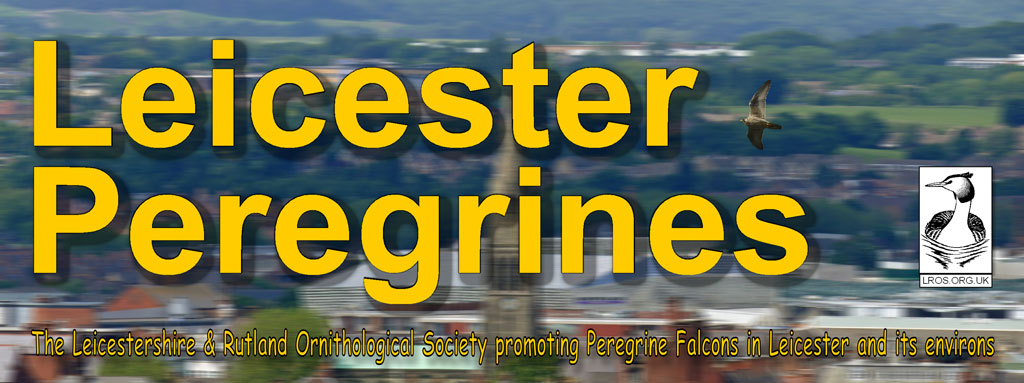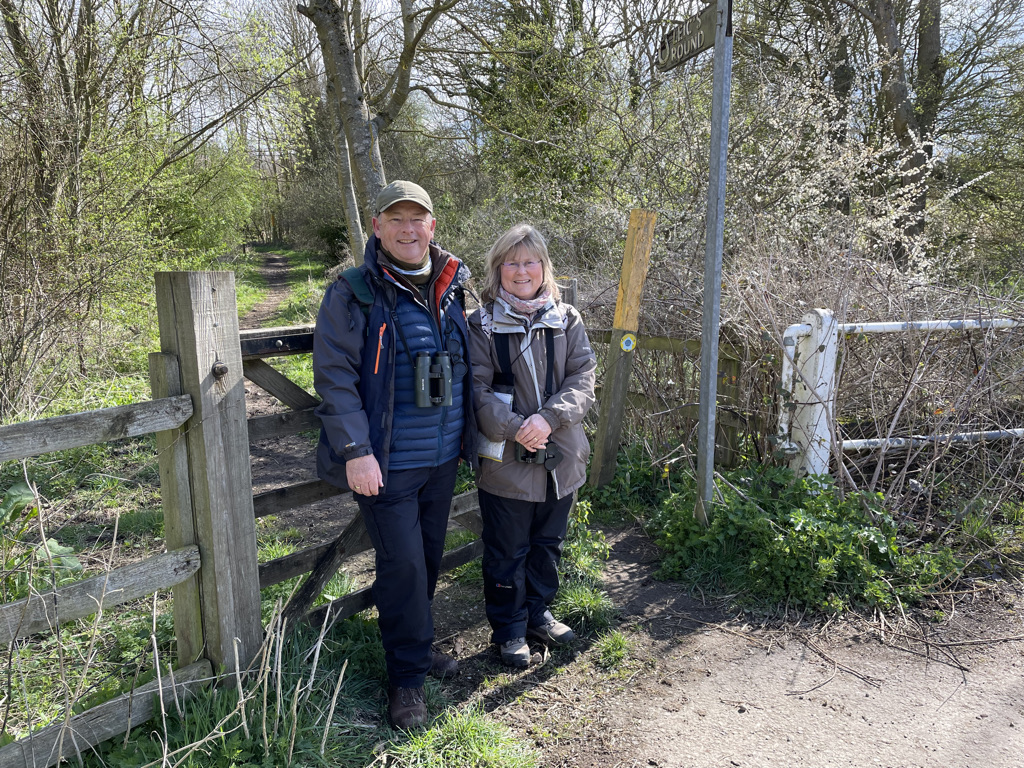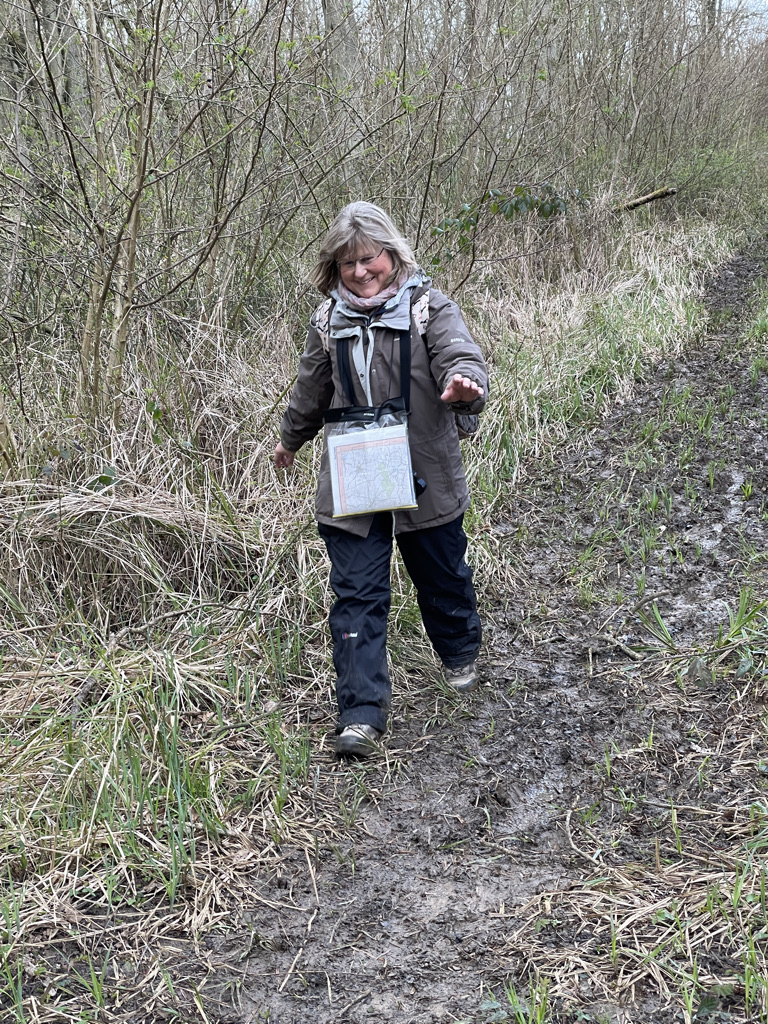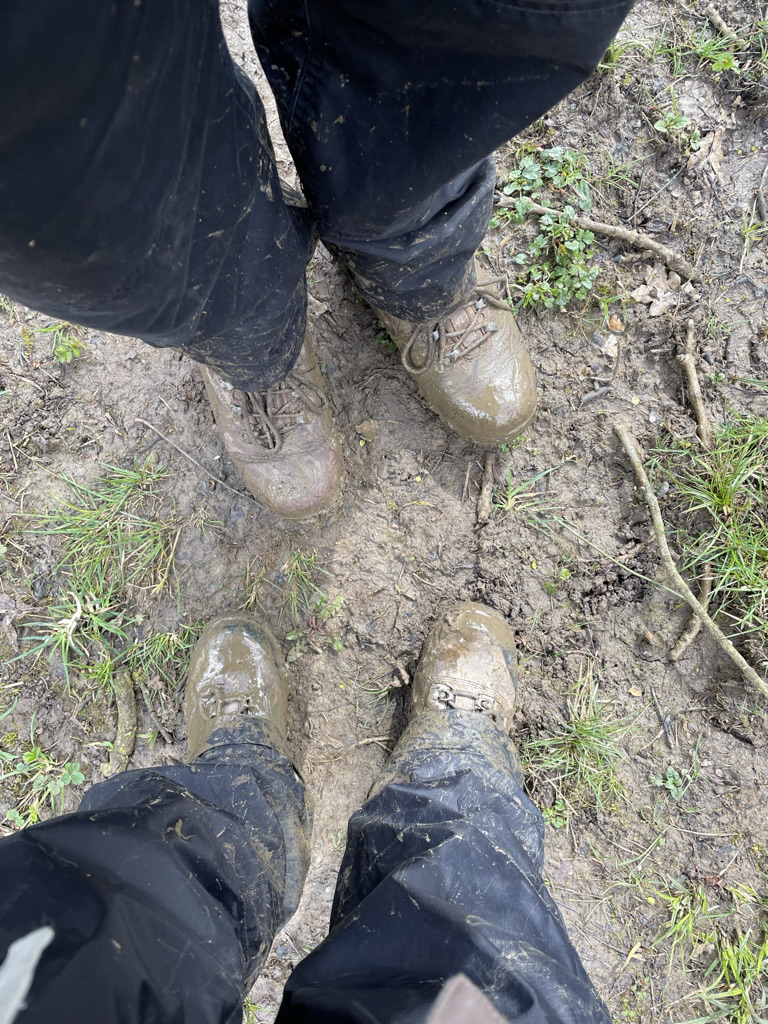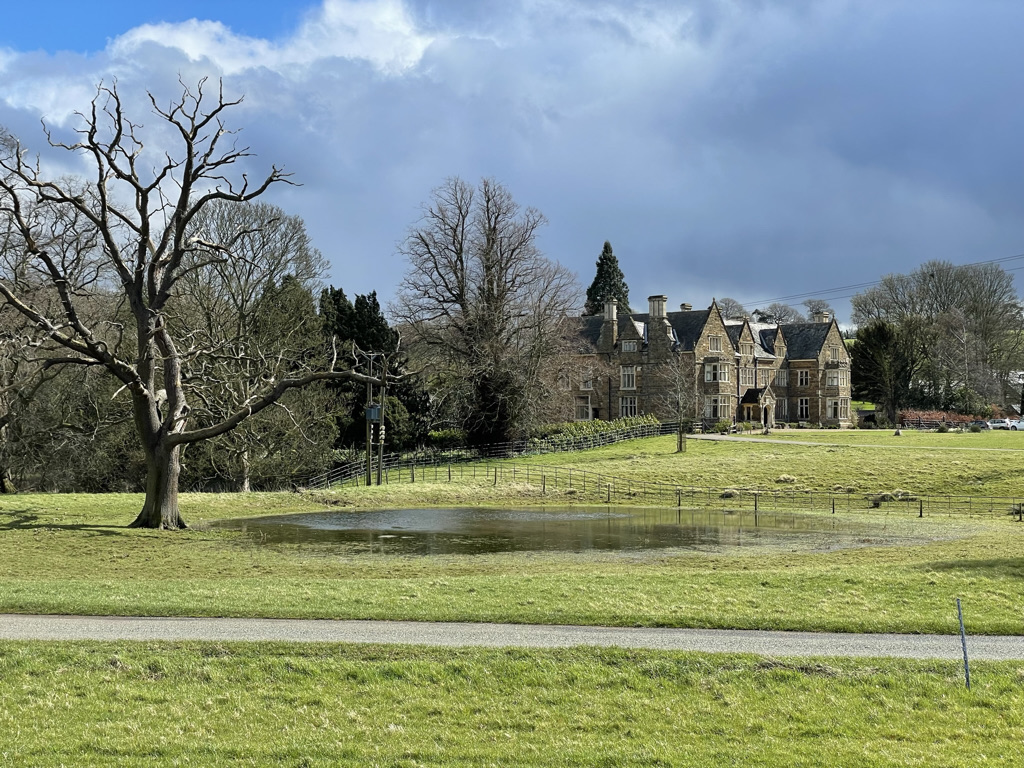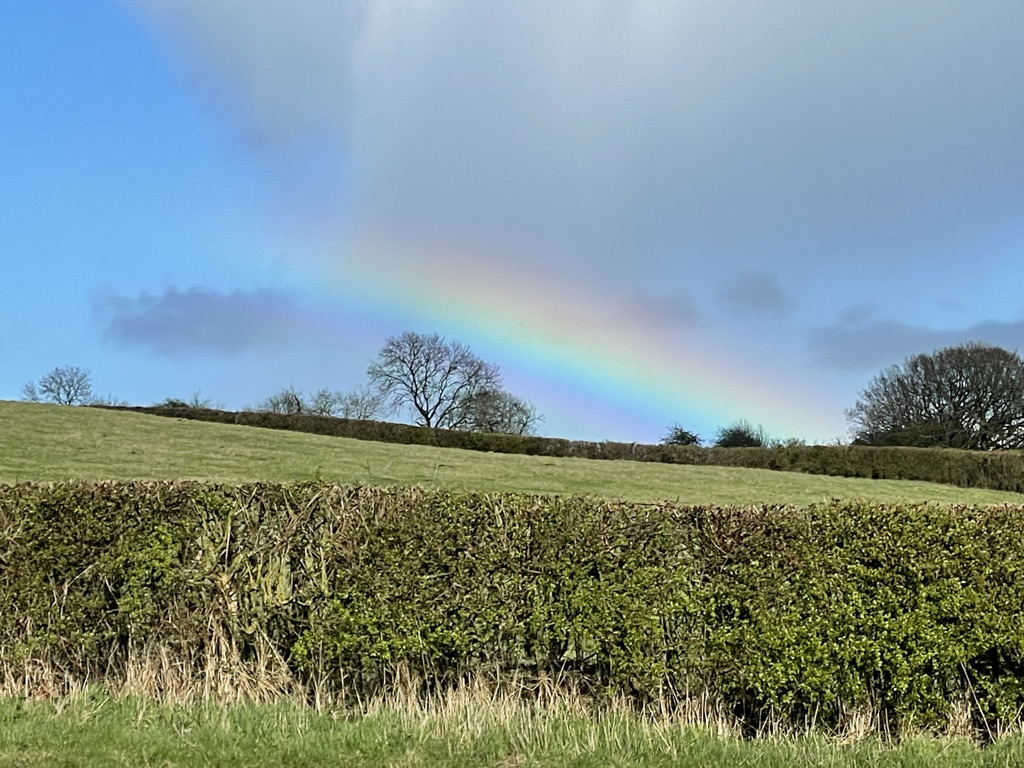Birding the Leicestershire Round
Section 4: Somerby to Hallaton Thursday 7th April 2022
Participants: Jim, Sue and David (to Owston)
For the first part of this section, we were joined by David, who had always had a particular affinity for the footpaths and tracks in this part of Leicestershire. As we started out from the beautiful Ironstone village of Somerby, the gently undulating landscape laid mainly to cattle and sheep pasture was certainly pleasing on the eye. Jackdaw, House Sparrow, Goldfinch, Blue Tit, Greenfinch, Chaffinch, Collared Dove, Kestrel and Buzzard were spotted early on, with many singing Wren and Chiffchaff accompanying our progress across the fields towards Owston. The thin seep of five Redwing overhead was complimented by five displaying Skylarks, before a burst of notes from a Blackcap emanated from one of the hedgerows, reminding us that other spring migrants would soon be on their way to us.
The plaintive song of a Mistle Thrush mingled with those of Blackbird, Robin, Wren and Dunnock as we neared Owston, with several Great Tit in full ‘Teacher-Teacher’ mode determined to out-perform their smaller Blue Tit cousins.
Once the site of a large Augustinian Abbey, Owston is now only a tiny village, but picturesque nonetheless. After spending the initial two and a half miles with David, enjoying a good old catch up, we parted company here and continued along a green lane towards Withcote, with sweeping views across ridge and furrow fields, kept closely grazed by a multitude of sheep and lambs. Red Kite, Yellowhammer, Linnet, Long-tailed Tit and Red-legged Partridge were observed in this area together with Hares bounding across the grass.
There were sporadic wintery showers and a challenging wind as we approached Owston Wood, but it was here that we added the next new species of the Round – two pairs of Tree Sparrow! Fortified by this find, we entered the notoriously wet and muddy wood with elated spirits, but the short stretch through this Forestry Commission-owned SSSI site was enough to test anyone’s patience and resolve. Staying upright and ensuring that we didn’t lose a boot or two in the deep, sticky mud took all of our concentration. There was no escape once we started, as the thick bramble, Blackthorn and Hawthorn understorey on both sides of the path was also impossible to negotiate. The sensation of saturated clay-rich gloop oozing over the top of our boots, which would have even defied gaiters, is not one that we would wish to repeat in a hurry. The previous note to self to bring wellingtons would have been sensible, but for the total length of the walk making this option even more uncomfortable!
A reassuring footpath sign at the other end of the wood however spurred us on and we were justly rewarded with another new bird of the Round in the form of a Marsh Tit, its characteristic call penetrating the trees. Other species noted included Coal Tit, Chaffinch, Treecreeper, Wren, Chiffchaff, and Great Spotted Woodpecker. A Roe Deer also picked its way through the trees just metres away from us.
After the exhaustion in reaching the far side of Owston Wood, we decided that it was high time for lunch. Stopping briefly at the top of the hill with fine views across to Robin-a-Tiptoe, we settled down next to a magnificent Horse Chestnut tree in the lee of a chilly wind for our pack-up and were entertained by the ariel acrobatics of a displaying Buzzard. Resuming our walk, we descended through a tree-lined avenue, many of which had been partially felled by recent storms. After crossing Oakham Road, we continued along the farm track to Withcote Hall, the squally showers becoming increasingly frequent. A Ukrainian flag flapped energetically in the breeze at the track entrance; one of many that we had witnessed on our walk thus far. At the farm buildings next to the Hall, we paused briefly to chat with a charming elderly lady farmer, who was busy weeding her courtyard with an eye to threatening dark clouds looming overhead. Two faithful sheep dogs never uttered a sound as we stood talking to her but protectively, never took their eyes off her either! Unfortunately, we couldn’t tick the fine cockerels that were strutting around the yard, but further on, at Withcote Lake, we added Moorhen, Mute Swan, a pair of Teal, Coot and three overhead Herring Gull to our list. A Rookery with 25 nests was also observed nearby.
We then climbed steeply to the top of a symmetrically domed hill, from where there were extensive views across the east Leicestershire countryside. The Launde Abbey Estate stretched out before us across the other side of the valley which was our next port of call. The tempting thought of a warming cuppa at the little cafe here soon evaporated when we realised that we still had a way to go to reach Hallaton, so we pressed on, passing a series of reedy lakes in the grounds, complete with Tufted Duck, Canada Goose, Moorhen and Mute Swan. The adjacent woodlands were carpeted in freshly emerged Dog’s Mercury, testimony to their ancient origin. A little further on, crossing the River Chater, a Grey Wagtail flashed by and two more Red Kites circled overhead. Bullfinch, Linnet, several Pheasant and Lesser Black-backed Gull were glimpsed through driving rain, together with several small Rookeries as we trekked uphill for some distance along another farm track before descending into Belton. Then suddenly, a beautiful rainbow appeared for a few seconds, just long enough to take a photograph, before the next weather front moved in.
Wheezing Greenfinch and two singing Song Thrush hailed our arrival at the peaceful little village of Belton-in-Rutland, where a village bench provided a much-needed rest for a few minutes. By now the feet were beginning to protest, but we knew better than to stop for too long in case we seized up altogether! After crossing the main A47 and weaving our way through the tiny village of Allexton, we were finally on the last haul to Hallaton. Our footsteps became heavier and more laboured as we collected large clods of clay on our boots, climbing and traversing a series of chemically treated ploughed fields in the deteriorating weather. Yet even here, over seemingly barren land, Skylark, Chaffinch, House Sparrow, Dunnock and Blackbird were still singing well into a premature dusk. A large Rookery of some 55 nests at Fern Farm, together with pair of Red-legged Partridges were amongst our last observations for the day. When we finally arrived at the Fox Inn at Hallaton, cold, drenched and satisfyingly tired, we were greeted by a posse of Mallards from the village duck pond, splashing noisily towards us through the puddles. Our dishevelled appearance didn’t seem to put them off, but the kind and welcoming staff in the Fox Inn were perhaps a little more discerning, even though they were too polite to say anything!!
